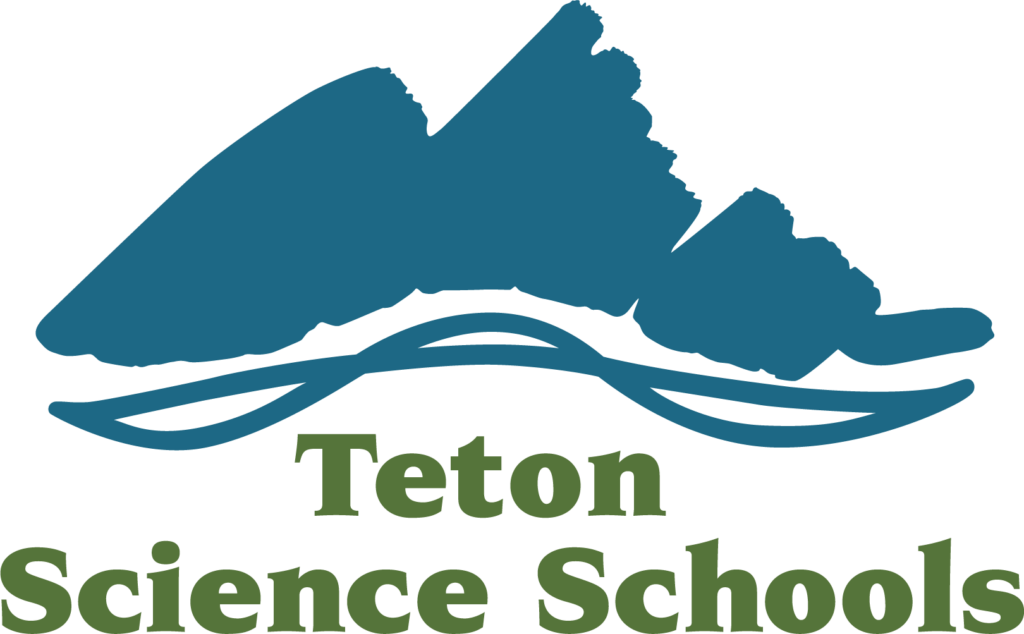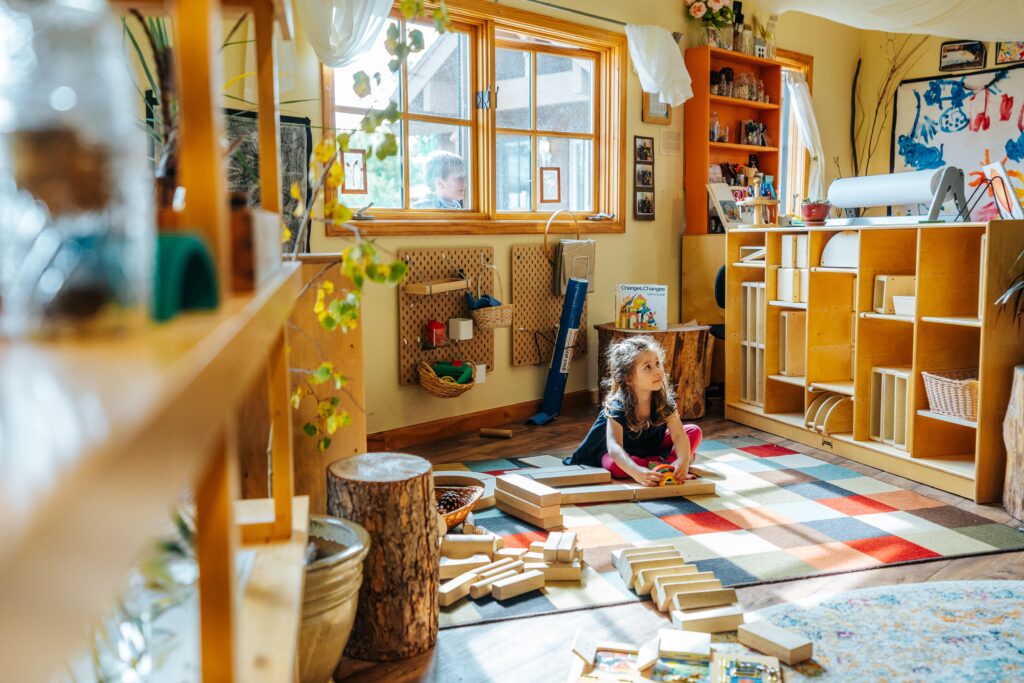When Erin Solomon first arrived on our Jackson Campus, the campus was just four months old. The walls of the pre-K classroom she’d call home were still bare. The values of the Reggio Emilia philosophy — the beacon that brought her to Mountain Academy — were unexpressed. And yet she, along with her new colleagues, looked at the scenario as an opportunity for growth and ongoing evolution.
Fourteen years later, Erin is the Mountain Academy Head of Early Childhood Education and has witnessed the beautiful transformation of her classroom — from one with bare walls to one that now inspires curiosity, wonder and awe; one that touches the senses in every which way and tempts you to touch, explore and express yourself through mediums like music, painting, collage, dance and more. In short, a true Reggio Emilia classroom.
We had a chance to talk to Erin about her experience building a Reggio Emilia-inspired classroom and why, at the end of the day, she’s totally okay with never arriving at mastery or a destination in her classroom.
TSS: You’ve been teaching at Mountain Academy for 14 years. Was the Reggio Emilia approach always embedded in the early childhood education program here?
Erin: When I started in 2006, the intention of being Reggio Emilia-inspired was always part of the program. When I was looking at this job, they clearly outlined that they were looking for somebody with experience with the Reggio Emilia philosophy and for me, that was the beacon that brought me here. Seeing that on the application really made me excited to be a part of the Pre-K program. When I arrived and dug into what was happening in the classroom, it certainly did not reflect the values of the Reggio Emilia philosophy and place-based education. It was an interesting time. Mountain Academy had just moved into the new buildings on the Jackson Campus and when you looked at the walls in the classroom they certainly weren’t as beautiful as they are now. It’s been an evolving journey.
I think one of the beautiful things in the Reggio Emilia philosophy is that every classroom is on their own journey. We can all learn through readings, professional development and working with consultants on how to implement the Reggio Emilia philosophy, but then we all still have to make it our own. As teachers come and go (you hope that they stay) you make progress but then you might have to slow down for a second and catch new teachers up to speed and you know that you’re always continually moving forward. I would say that my vision for where we can go is still just ahead of my grasp (and I think it might always be) and that’s why I always want to continue moving. I don’t really see myself arriving at mastery or a destination and I’m okay with that.

TSS: How has the Reggio Emilia program grown since you arrived?
Erin: There have been really big jumps within our program in terms of what we’ve taken on in the classroom or how we’re implementing the Reggio Emilia philosophy and place-based education through professional development. Professional development is critical for an evolving and growing teacher and those moments where we’ve really leapt ahead, versus just walking, were when we’ve gone as an entire faculty to tour other Reggio Emilia classrooms or attended a nature-based or North American Reggio Emilia Alliance conference; those are the things that have really supported forward growth. We’ve been really fortunate to work with a Reggio Emilia consultant from Washington D.C. and her feedback is invaluable for us to identify the areas in which we really need to push ourselves. Sometimes it takes that outside eye or the experience of what someone else is doing to help self-identify and motivate our team to do more.
TSS: What have been the biggest challenges in implementing the Reggio Emilia philosophy?
Erin: For teachers coming into our program, often there’s a lot they have to learn about the Reggio Emilia philosophy. There isn’t really a teaching program dedicated to the Reggio Emilia philosophy, so unless a teacher had a lot of exposure to it during their undergrad program, most of their learning occurs right here in the classroom and sometimes that creates a big gap.
Early on, one of our biggest challenges was getting parents to understand the philosophy and why it was valued (and valuable) over something more standardized and a little bit easier for them to understand. We’re not a letter of the week program. The curriculum is not prescribed and I think for parents, understanding that the curriculum can emerge, be thoughtful, student-centered and be just as valuable, challenging and engaging (or more so) than other types of curriculum was a big hurdle to overcome.
I think we’ve done a really good job in last 9+ years at educating parents about what our program looks like before they enter in and helping them really experience it. I think our parent nights are incredibly valuable; they see what questions their students are asking and where we’re going and then they get to experience and participate in it. And then the daily documentation that they receive every day leaves little doubt in their minds that haven’t chosen a really great place for their child to be.

TSS: What do you see as the biggest rewards or benefits to this approach for early learners?
Erin: The Reggio Emilia approach paired with place-based education creates an amazing foundation for young children to see coming to school as something that they love to do. Their ideas and interests are valued and they have the opportunity to explore freely in their classroom, the natural world and community. They start to be their own researchers; they start to be observant, to be curious, to ask questions and to be empowered and viewed as capable and contributing members of our community. That’s a really powerful beginning — to not be told, “You can’t,” but to have someone joyously at your side be like, “How can we? Let’s try to figure this out.”
For the teachers that have been with me the longest, seeing where we go with children’s interests is incredibly rewarding. Our journey each year is always different from the year before and over the course of our tenures there hasn’t been a year that’s been identical. We have this beautiful framework to support children and have that sustainability that we need as teachers — with these core principles and ways of being in the classroom — and that allows for so much creative freedom within the curriculum that keeps it really engaging and interesting for the students and us as adults, too.
TSS: What resources would you recommend to an educator looking to incorporate the Reggio Emilia approach into their classroom?
Erin: First, professional development for your team. We have some great workshops coming up with our Teacher Learning Center specifically focused on the Reggio Emilia philosophy and place-based education. Second, there are some great books and podcasts:
- Book — Nature Preschools and Forest Kindergartens: The Handbook for Outdoor Learning
- Podcast: Is a Reggio Emilia inspired classroom right for my child?
Interested in learning more about how we meld the philosophies of Reggio Emilia and Place-Based Education at Teton Science Schools?
Check out our upcoming workshops


